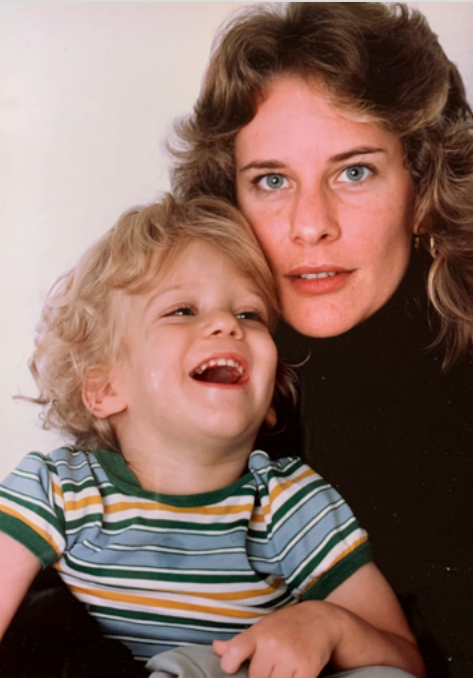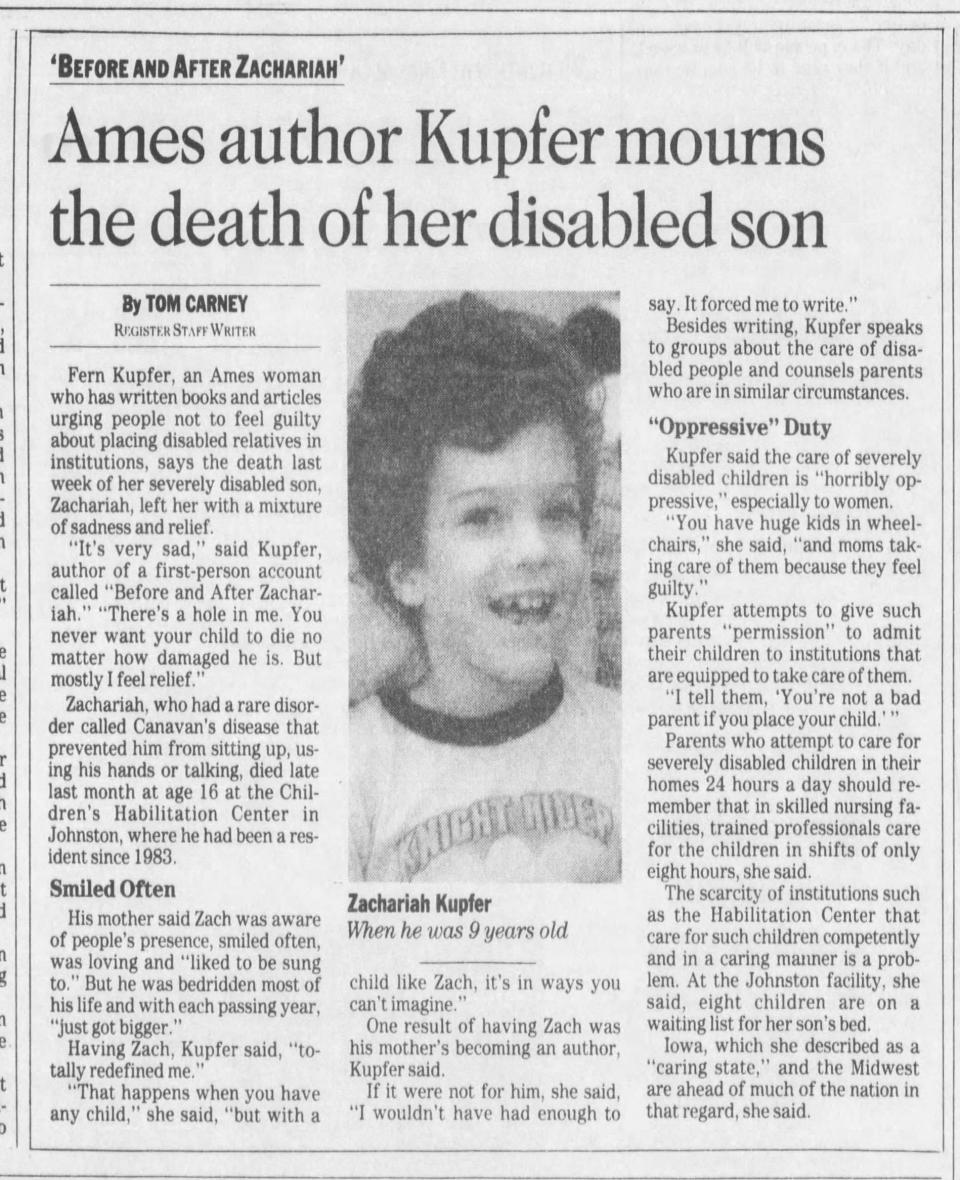'Before and After Zachariah': What the story means 40 years later
I got a call from a very nice woman who said she was in charge of unclaimed remains left in Iowa funeral homes. She told me that there was an urn sitting on a shelf with the name of my son.
My son Zachariah had died over 30 years ago. There was an article in the Metro section in the Des Moines Register about his passing. Now the ashes were in an urn in a funeral home in Des Moines? I had no idea how they got there.
There was more. A local news channel wanted to do a feature about the found ashes, the woman asked: Was I willing to be interviewed? Maybe, I said. But I suggested that what I had to say might not be the heart-warming story they anticipated.
For many, many years I have written about Zachariah and lectured around the country. I spoke on talk shows from New York to California and met a young Oprah Winfrey when doing a show in Baltimore in 1980. I flew back to Iowa and told my husband, “I met a woman named Oprah and she is going to be really famous!”
What was there left to say? And yet, the story continues to change. Back again to the beginning …

Zachariah, born in 1976, had Canavan disease, a rare leukodystrophy syndrome that causes brain deterioration. There were years going to doctors and therapists, searching for answers. We didn’t know it at the time, but both his father and I carry the gene for this deadly disease. The lack of an enzyme resulted in our beautiful blue-eyed boy who never walked or talked and was in diapers all of his life.
When we placed him in an ICF (Intermediate Care Facility), Zachariah was just 3 years old; he was eventually moved closer to us, a children’s center in Johnston, Iowa — a wonderful, caring place. We visited often. I used to get into bed with him when he was too big to hold in my arms.
During Zachariah’s young life, his father and I had to make awful decisions. Should Zach be put on a feeding tube when he could no longer swallow? Should he have an operation for the scoliosis that was curving his body? Should we give permission to place a “Do Not Resuscitate” sign above his bed?
Heart-breaking choices. And none of them “right.”
Early on in Zachariah’s diagnosis, our family had consented to participate in medical research to find the missing enzyme that caused Canavan disease. We collected urine and blood samples and skin grafts and sent them to labs in New York. The day Zachariah died (right after his 16th birthday), his body was shipped there so the researchers could perform a brain biopsy, something we were unwilling to put him through when he was alive.
Our son’s memorial was held on a beautiful day in the sunny courtyard of the facility where he lived; someone played the folk song “I’ll Fly Away,” and a dove was let loose. Nurses and care workers at the center spoke tearfully about the joy they found in caring for Zachy. I prepared a eulogy about the pain of parents who have a child like Zachariah and also expressed my profound gratitude to everyone who touched our lives.
Eventually scientists isolated the gene. Canavan is similar to Tay-Sachs — an equally horrific syndrome that ends in childhood death. These diseases cannot be cured, but today there are genetic tests for parents who carry lethal genes. There is also an amniocentesis for a fetus that might be affected, and a woman could have the choice of ending the pregnancy.
After Zach died, I was at a conference for genetic diseases, sitting on the dais with three doctors. I was very proud of our family’s part in medical research. At that conference, the presenters all had nametags stating professional status. The doctors and scientists were affiliated with medical schools and hospitals. Although I was a teacher and writer, my nametag said simply: Zachariah’s Mother.

Today I am 77 years old and I can hardly believe that Roe v. Wade was over-turned and that the government is involved in private, personal decisions between a woman and her doctor.
Gov. Kim Reynolds, is trying to revive the “fetal heartbeat law” that bans abortion where a heartbeat is detected in any fetus — often earlier than many women know they are pregnant. Certainly before a woman would know her baby had a disease like Canavans.
When my husband and I moved from New York a few years before Zachariah was born, I was proud to live in Iowa. The people were friendly. The politics were balanced and sane. Public education was exceptional. Our wonderful and empathic governor, Robert Ray, welcomed refugees. But it is frightening what this state has become. It is frightening what this country has become.
I am pro-science and pro-choice and pro-family and pro-ethical decisions made by grown-ups. Life is complicated. Choices women have to make can be painful and personal. Abortion is one of them.
This is not the heartwarming story that they wanted for the human interest segment on the Iowa local news. But this is the story that again and again needs to be told.
Fern Kupfer of Ames is author of "Before and After Zachariah" and a contributor to the Iowa Writers Collaborative Substack. Contact: flkupfer@gmail.com.
This article originally appeared on Des Moines Register: What the story 'Before and After Zachariah' means 40 years later

